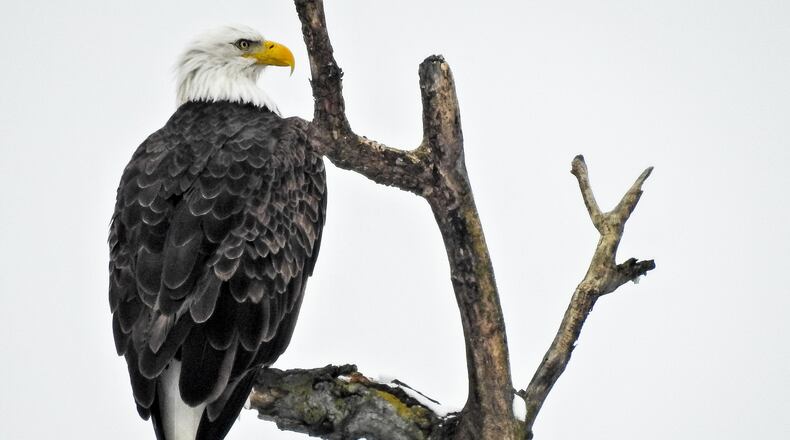The Dayton region is home to several eagles along the Great Miami River.
People can submit sightings at wildohio.gov/reportwildlife through March 31. People can see updates of verified nests throughout the coming months at wildohio.gov.
“From the Ohio River to Lake Erie, our state has become an ideal home for the bald eagle,” said ODNR Director Mary Mertz. “This is a great opportunity to get outdoors and see this soaring raptor, all while providing a valuable conservation service to our state.”
The bald eagle was once an endangered species, with only four nesting pairs in Ohio in 1979. However, thanks to partnerships between the Division of Wildlife, Ohio zoos, wildlife rehabilitation facilities, and concerned landowners, its population increased. The bald eagle was removed from the federal list of threatened and endangered species in 2007 and from Ohio’s list in 2012.
>> RELATED: Tornado-damaged park provides perfect perch for bald eagles: ‘It’s got all the things they like’
“Wildlife biologists estimate that Ohio hosted more than 350 nesting pairs of bald eagles in 2019,” said Division of Wildlife Chief Kendra Wecker. “Many of those nests are situated along Ohio’s portion of Lake Erie, and along with Ohio’s rivers and reservoirs.”
Ohio Division of Wildlife biologists typically estimate the number of eagle nests by flying select areas of the state and verifying sightings. However, identifying the locations of all the nests in the state hasn’t been attempted since bald eagles were delisted in 2012. Wildlife staff, including wildlife officers, will verify nest locations. This will help update the Division of Wildlife’s historical databases and confirm the results of estimated counts.
Bald eagles in Ohio typically lay eggs and incubate in February and March. Young eagles leave the nest about three months later, usually in June. The birds nest in large trees such as sycamores, oaks, and cottonwoods near large bodies of water. Fish and carrion are preferred foods.
The state reminds people that bald eagles are protected under both state law and the federal Bald and Golden Eagle Protection Act. It is illegal to disturb bald eagles. When viewing these majestic birds, remember to respect the bird’s space and stay at least 100 yards away from the bird or nest. Disturbing bald eagles at the nest site could lead the pair to abandon the eggs.
About the Author
